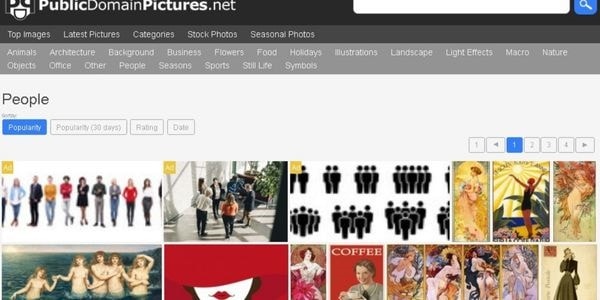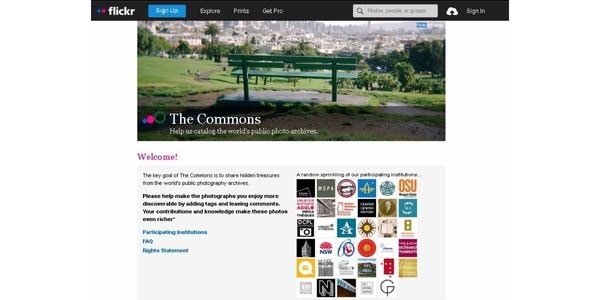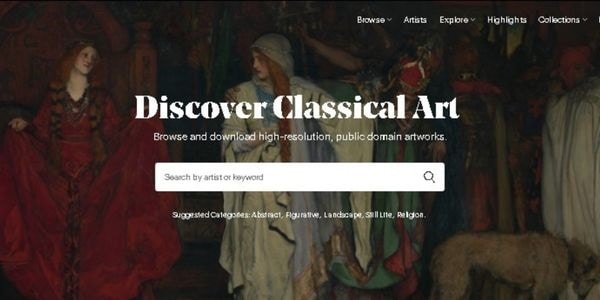If you are in the creative industry, you must have come across the term public domain art. However, not many people know what the term means. In addition, identifying sources for public domain art can be challenging if you are unaware of what these creative works entail.
Here is a full overview of public domain art, including how to find royalty-free art for your creations. Furthermore, you will find answers to the most frequently asked questions concerning royalty-free art.
In this article
Part1: What is Public Domain Artwork?
Did you know that not all items you find on the internet are public domain? For example, regardless of the source, you cannot use someone’s street art in your commercial campaigns without their consent. In addition, different artists offer their work under various licenses, each with its unique usage requirements. For example, artwork under the Creative Commons license is free to use for personal and commercial purposes.
However, not all platforms offer the license information freely. Therefore, here is some information to help you identify royalty-free art you can use for your creative projects.
So, what are public domain arts?
Public domain arts are any creation out of copyright, meaning you can use it hassle-free. In addition, public domain arts span various creations, including graffiti, video mash-ups, songs, images, and paintings. Furthermore, most government copyright offices do not list public domain arts on their websites.
However, the following are the determining factors for work to become public domain.
The copyright protection is expired
Any work between 50 and 70 years old after the author’s death is public domain art. However, the copyright expiry can vary between countries. Therefore, familiarize yourself with your country’s copyright policy before using such works.
The art does not meet the requirements for copyright protection
In many countries, recipes, facts, and calendar dates do not qualify for copyright protection. However, you can face legal action if they include original descriptions and artwork. For example, reposting the images from last year’s calendar is a violation if a professional photographer does them.
In addition, some countries do not consider government documents as copyright items. For example, planet photos and videos from the National Aeronautics and Space Administration are public domain art, meaning you can use them freely for commercial and personal creations.
What is the copyright policy of famous art in history?
As mentioned above, you cannot rely on copyright websites to determine if your desired art is royalty-free, especially when the artist’s work is unpublished. However, the following tips can be useful in helping you avoid copyright violations. Kindly note that the tips below are for your general knowledge, and you should not rely on them as legal expert advice.
- All work published before January 1st, 1923 is public domain art. However, famous art between 75 and 100 years old may have copyright extensions, which can affect their usage in other projects. Therefore, you should check with the current owner to determine whether they are royalty-free art.
- You can freely use your photo of famous paintings, drawings, and sculptures if they are an exact reproduction of the public domain artwork. This is because you automatically earn the copyright since the photo includes elements of your originality, such as the camera angle and post-production techniques.
- You can not use a third-party photo of public domain art if the resulting image is a derivative. This is because the law recognizes the creator as the author and copyright owner. As such, you must have verifiable permission before using their work in your creations.
- Not all items without a © are in the public domain. This is because modern video editing software allows you to remove copyright symbols from different works. Therefore, always perform a reverse image search when unsure of the photo’s origins.
Can you use them for free?
Yes. You can use royalty-free art for whatever purpose you see fit. For example, you can reproduce the text and illustrations from the original version of Alice’s Adventures in Wonderland (1865) because they are in the public domain.
However, the reproduction of the 1951 version by Walt Disney is a copyright violation since it is a derivative of the original version. In addition, The Walt Disney Company owns the trademark for all the derivatives, including the movie, cartoon characters, and merchandise.
Part2: Best Official Public Domain Art websites recommendations
Now that you know what constitutes being in the public domain, where can you find public domain creative assets? Below are recommendations of the best official public domain art websites. Kindly note that the list contains NGO and government sites, some of which may not be accessible in your area.
1. Public Domain Pictures

Publicdomainpictures.net is a collection of thousands of photos and videos across all genres. In addition, you can easily identify your desired pictures using the categories tab. However, you need to purchase the Premium Download option if you want them in larger resolutions. Furthermore, some royalty-free art may include usage restrictions, which are clearly stated in the image description. For example, you cannot use photos with paid models for offensive campaigns.
2. Wikimedia Commons

Wikimedia Commons is arguably the largest public domain image library available. It hosts over 86 million creative assets from global contributors. In addition, the interface is available in multiple languages, making it accessible to everyone. However, some consider it challenging to use, given the large database. However, the developers offer you recommendations through designated tabs like Valued Images and Featured Pictures. Although most of the content is free to use, you will find images that require you to acknowledge the contributor before using them.
3. The New York Public Library Digital Collections

The NYPL website features a library of about a million royalty-free artworks, including manuscripts, historical maps, and rare photographs. In addition, it allows you to only search public domain items by checking the option on the search box.
Furthermore, the homepage contains different photo collections, which you can access by clicking the category tabs. For example, the recently digitized bubble tab gives you access to the most recent photo uploads. However, not all images listed are free to use and may require you to link back to the website. As such, always read the Rights Statement at the bottom of the download page to verify the usage requirements.
4. Flickr Commons

Initially, Flickr only featured images from a selection of verified contributors. However, through their partnership with the Library of Congress in 2008, you can now access thousands of public domain historical photos from institutions like UC Berkeley and the Armenian Studies Program - Fresno State.
In addition, most of the photos on the Flickr Commons library are listed with no known copyright restrictions. Therefore, you can download and use them without fear of any repercussions. Furthermore, the search engine includes multiple filters for more accurate results. For example, you can filter photos by color, orientation, and date. Alternatively, you can find public domain content by visiting the Public Domain group URL.
Part3: Best Public Domain Art Search Engine
Although Google search is the most popular resource for royalty-free art, there are specific public domain art search engines to help you find exactly what you need. Here are a few of them to consider.
1. Artvee.com

Artvee.com is a public domain art search engine that specializes in classical art. The platform allows you to search millions of public domain images from some of the world’s top museums, including the Smithsonian and the Met.
In addition, Artvee.com offers you keyword suggestions depending on user popularity. Alternatively, you can use the Artists tab to locate classical art by specific painters, including Claude Monet and Vincent Van Gogh. Furthermore, you do not need to register an account to use the service. You only need to enter the URL in your browser, narrow down the results using keywords and click download.
2. Museo

Another public domain art search engine to consider is Museo.app. It is an open-source web interface that allows you to find royalty-free art from different museums. Currently, you can access the collections from the following institutions:
- The Harvard Art Museums.
- The Rijksmuseum
- The Art Institute of Chicago.
- The Cleveland Museum of Art.
- The Minneapolis Institute of Art.
- The New York Public Library Collection.
The above institutions offer open and free API access to their collections, allowing you to download and use them royalty-free. Unfortunately, Museo does not offer an elaborate search engine like Artvee and uses simple keywords to get you results. However, it can work as a decent alternative if you do not want to filter through millions of art pieces.
FAQ
Is there a difference between royalty-free art and public domain art?
Yes. Royalty-free art refers to work that has no recurring payments to the author. However, it may contain usage restrictions depending on the source website. For example, you may need to make a one-time payment to download the image.
Conversely, public domain art is copyright free and does not require you to make any payments to use it. Furthermore, it does not include any usage restrictions.




